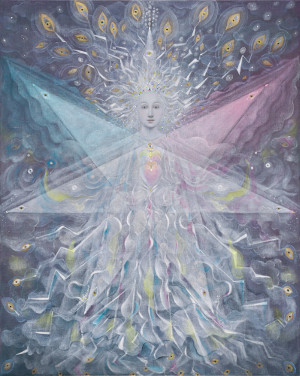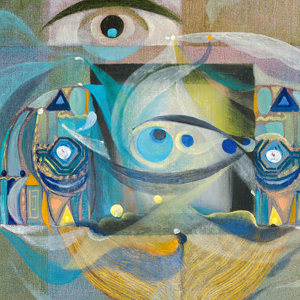Cello Solo Sonatas 2, 3 & 4 (Opp. 86, 106, 140)

Piano Sonatas 4, 5 & 6 (Opp. 56, 58, 73)
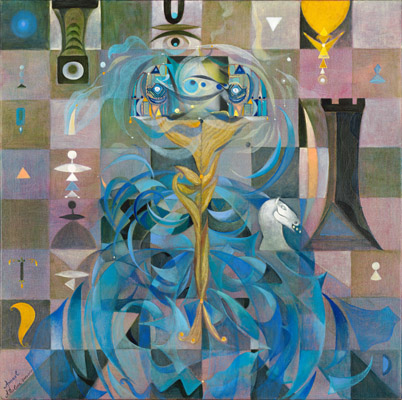
Chamber Symphonies 1 & 4 (Opp. 145, 153)
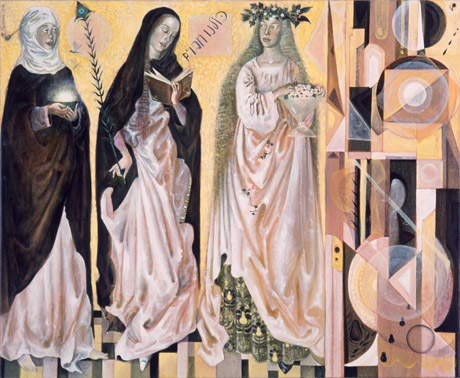
Symphony 7 (Op. 81)
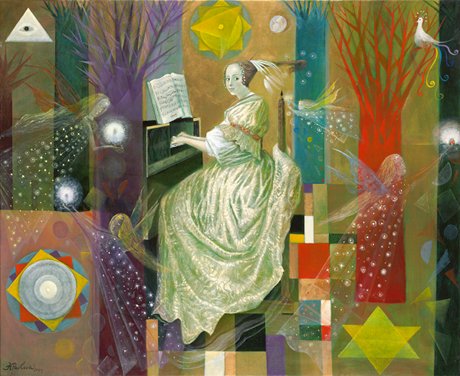
The delicate purity of the music points to an indestructible human substance
(Frankfurter Rundschau)
From film and circus music to tragic grand opera, from simple melodies with easy accompaniments to complex twelve-tone music, he was a master of all forms, genres and stylistic directions. With virtuosity and elegance, but always judiciously and with balance, he used elements of Jewish, Polish, Russian and Moldavian folk music. He developed a very personal style with a clear, almost classical architecture. His melodic language – at times introverted and meditative-reflective, at other times full of effervescent joy of living – is particularly noted for its special richness.
(Ulrike Patow in MGG, Vol. 17, p. 688ff)
Weinberg was a very modest person, and an extremely subtle and delicate composer: his music breathes a beauty and warmth that is seldom found among contemporary classical works; yet, upon hearing the music, one is also impressed by an intrinsic power, a certain tactile strength and a dynamic, forward-driving motion. Surely then, Weinberg is a composer of contrasts, a master, like his friend Shostakovich, of expressing the lighter and darker sides of life in a single, unified whole.
The remarkable and fascinating progression in Weinberg's music from his early Op. 5 and 8 piano sonatas, to his last Op. 153 chamber symphony, written over 50 years later, traces a composer developing from an already advanced, experimental musical vocabulary to the absorption of modern and post-modern tendencies, to a clear neo-classicism with beguiling grace, all the while never abandoning the melodic and tonal contours of each individual work. Harmonically and rhythmically complex, the music often mixes tender, plaintive lyricism and Jewish themes with stark, contrasting dissonances, to create a balance between tradition and modernity.
One feature that is prominent above others in many of Weinberg's works is a certain religious yearning, a soulfulness that makes some works (especially those for solo stringed instruments) resemble the intonation of a prayer, yet one which is approachable to everyone, regardless of background or personal beliefs. Themes and ideas dwelling on subjects such as suffering, love and faith are not uncommon, but there is also a characteristic, affirmative joy in life. Ideas centered on suffering feature prominently in so many works, no doubt due to the circumstances of the composer's difficult life and the hardships he had to endure during the wars of the 20th century. In this sense, there is a tremendous edifying quality to the music, combined with a trust and hope in something perennial and eminently human, capable of rising above all unfavourable conditions. It is in this way that Weinberg's music carries something resonantly Divine – a light going beyond all restrictions and challenges, and able to change the world for the better.
January 2012. Copyright © 2012 – 2023 A.U./www.music-weinberg.net.
Like all great music, Weinberg's works – with their many layers of musical meaning and their complex compositional techniques – can be understood and interpreted in a variety of ways. After all, whatever a composer's original intentions may have been, genuine music transcends its creator
(as Olivier Messiaen says). This section presents brief commentary on a small selection of Weinberg's works with the two-fold aim of informally yet uniquely conveying a “sense” of the music, and of providing – along the way – additional insight into some of its salient characteristics (no doubt to some degree subjective insight, as is the case for all musical commentary), which tend to be overlooked or discussed less often. The commentary refers to Weinberg's works from the thematic works-list in the ensuing section (see the horizontalvertical navigation bar at the bottombottom-right).
An early version of this section was first published in 2002. It was subsequently revised in 2012, and further again in 2020. The current version is from 29th of December 2022, which adds commentary on Weinberg's Symphonies Nos. 17 Memory
Op. 137 (1984) and 21 Kaddish
Op. 152 (1991). Commentary on Symphony No. 8 Polish Flowers
Op. 83 (1964) by the musicologist Lyudmila Nikitina appears inter alia on the Further Reading page.
Although Weinberg was a highly capable pianist, his piano sonatas only span the early and middle periods of his career. In fact, sonatas Nos. 1 and 2 are among Weinberg's earliest works in any medium. Regardless of the occasionally audible influence of other composers (mainly Prokofiev), these early sonatas still manage to convey a distinct and personal voice. Moreover, when one abstracts away from any exterior similarities, it is possible to hear evidence of Weinberg's preoccupations with themes dwelling on suffering and love – one could say suffering with love, i.e. with sublime, self-sacrifical love – that are expressed again and again, in different ways, in works written decades later. In these early works one can also discern Weinberg's somewhat idiosyncratic treatment of polyphonic textures (perhaps most vividly in the Op. 5 sonata's third movement), which becomes a salient feature of his later music. While perhaps not entirely “vintage Weinberg“, these sonatas are still moving works, which is quite an achievement given the composer's young age when he wrote them.
In his later piano sonatas, Weinberg shakes away (or one could say, better integrates) his early influences to more clearly reveal his own voice, at times imbuing the works with a quartet-like sonority. This is especially true in the first movement of sonata No. 3, and the last movement of sonata No. 4. If one could venture to describe their sonorous, polyphonic approach, the expression “geometrically structured” seems apt, showing a balance between suffering and joy, tranquility and turmoil – like much of Weinberg's music in general. This individual, “geometric structuring” (referring not only to the sophisticated harmonic techniques which Weinberg's employs in many of his works) is closely related to the idea of ‘universal harmony’; and to cite the Russian musicologist Lyudmila Nikitina: the idea of universal harmony, the unity of all that exists, is key to understanding the characteristics of Weinberg's style, its neo-classical and neo-romantic orientation
. From the slow movements of both sonatas, still and introspective, it cannot be doubted that Weinberg was a man of deeply personal faith, which shines out from his music as solace. The fifth and sixth sonatas are especially beautiful works, combining Weinberg's “geometric structuring” with genuine warmth and fervour.
The solo cello sonatas are among Weinberg's best chamber pieces: profound and contrapuntally complex, with yearning lines and vivid contrasts that seem to create a myriad of luminous forms, now darker, now lighter, or all the variations of single colour, forcefully expressed. Like all of Weinberg's works for stringed solo instruments (of which there are 12), the four cello solo sonatas are works of great depth, beauty and spirituality – being filled not with sadness or desolation, but aspiration and consolation (sometimes using Jewish liturgical motifs as a basis). Every single sonata is a true masterpiece in its own way: from the soulful No. 1, to the modernistic-dodecaphonic No. 4. Indeed, it would be no exaggeration to say that they stand good comparison with the solo cello suites of J.S. Bach and Max Reger as some of the most significant music written for the instrument.
[String quartets 7, 8 and 9], written between 1957 and 1964, are all the proof you could ask for, if proof you still require, of the individuality and depth of Weinberg's genius...
(Martin Anderson, March/April 2001 issue of the Fanfare, USA Magazine)
There is only one quartet cycle that comes close to Vainberg's accomplishments in this genre, and that is Shostakovitch's. If you think that is an exaggeration, Shostakovitch did not. He regarded Vainberg as his peer and playfully alluded to a "race" that he and Vainberg were running to see who could write the most quartets. If you admire Shostakovitch's quartets, these are works you should also explore
(Robert R. Reilly, Music: No End of Odds and Ends, Crisis Magazine Jan 2002)
Weinberg's quartets as a whole, like those of Shostakovich to which they bear comparison in terms of quality and quantity, are personal works. While in the symphonic form Weinberg often explores large-scale, monumental ideas encompassing the shared experiences of those caught in war or oppression, the quartets carry his individual, philosophically existential reflections, in rather more abstract form. They are personal statements of courage in the face of inner turmoil; of compassion amid carelesness; and of an earnest – one could say, inwardly religious – search for freedom and something higher that can help everyone alike cope with tribulations in life. The string quartets also chart Weinberg's whole artistic development, as outlined in Dan Elphick's PhD thesis and his recent book on Weinberg and his Polish contemporaries (see the Further Reading page for more details). In this development, some commentators see influences of (or perhaps more appropriately, allusions to) Shostakovich, Bartók, Myaskovsky, Prokofiev, Hindemith, etc. – as so often happens when discussing the music of a newly-discovered composer – but actually, these allusions (as the Russian musicologist Lyudmila Nikitina writes) are nothing other than Weinberg's polystylism, the use of which results in a unified style that sounds exactly like... Weinberg! – and no one else.
String quartets Nos. 7, 8 and 9 are particularly poignant works ranking among Weinberg's finest from his middle period, and deserve many repeated listenings. Each one uniquely combines robust structure with sorrowful intensity, ebullience and gentle lyricism. Unlike some of Weinberg's later quartets, namely, 11 – 16, these three quartets demonstrate Weinberg's mature language in a more approachable, more readily comprehensible fashion – which is not to say, of course, that his later and more abstract essays in the genre deserve any less attention.
Memoryand 21
Kaddish(Opp. 137, 152): Sublimation
Music, real music, is never attached literally to a theme.
(Dmitri Shostakovich – quoted in Judith Kuhn, “Shostakovich in Dialogue: Form, Imagery and Ideas in Quartets 1-7”, Routledge, 2010, p. 106)
Given Weinberg's difficult life (see the Biography page), one could easily believe that his music, especially in the larger-scale orchestral works which admit a vast range of colour, are agonizing or suffused with rage or depressive sadness. Such beliefs transferred into opinion and forced onto (“heard in”) the music itself often find their way into commentary as well, with some commentators even hearing “graphic” depictions of violence or anguish. It is beyond doubt that the life which Weinberg passed through and the events of which he was a first-hand witness left an indelible mark on his music; but in Weinberg's case these inner and outer turmoils did not give rise to forms of negative expression – let alone crudely literal depictions – but rather, they were sublimated, becoming the soil in which strength and virtue were born in equal measure and suffused into music of genius. In a 2018 interview (Introducing Mieczysław Weinberg Q&A, CBSO) shared with his wife and colleague Michelle Assay, the UK-based musicologist David Fanning articulated this same view in similar terms: Weinberg's music [...] takes his personal experiences to a higher ethical level, reminding us of the evils of inhumanity and yet simultaneously of the inextinguishable light of humanity. He himself never played the victim card, and what you can hear in his music [...] is above all compassion, fused with consummate craftsmanship.
This is no doubt helped by the fact that much of Weinberg's music, even at its most personal-programmatic, retains a strong element of the absolute, or in the words of Lyudmila Nikitina's Grove article: his music has an absolute – even abstract – quality, with similar themes able to assume varied semantic hues in given environments.
War in Weinberg's music can be seen not only as a pre-eminent example of suffering for many, and of many, human beings, but more abstractly, as a symbol of encountered grief and fateful cataclysms in the course of one's individual life.
Keeping this discussion in mind, one can see how Weinberg's explicitly war-related symphonies, of which there are many (e.g. Nos. 6, 8, 17, 18, 19, 21), present a variegated message that at once encompasses sublimated mourning and pain, but also many of the life-elements needed to overcome that mourning and pain. Two striking examples are the 17th and 21st symphonies, which Weinberg completed towards the end of his life, in 1984 and 1991, respectively. Both works have subtitles (Memory
in the case of the 17th, and Kaddish
– referring to a Jewish liturgical prayer for the dead – in the 21st) and both treat similar subject matter.
The 17th symphony opens with a long-breathed, elegiac statement that unfolds in music of great refinement and delicacy. The second movement (incorporating quotations of the Latin Dies Irae theme) begins with a dream-like atmosphere, then develops momentum and launches into a rumbustious sequence of fanfares and portentous drum beats, throughout a rugged course that eventually returns, symmetrically, to the initial dream-like atmosphere. The tempestuous and determined third movement mixes uncertainty with hope, while the symphony's last movement grows in grandeur and, after a central re-affirming struggle framed either side by two introspective sections, builds to a concise but ambivalent close – oscillating between triumph and tragedy – like an admonition.
The 21st symphony, which can be seen as Weinberg's altogether final statement on explicitly war-related themes, not only in musical but also philosophical terms, is replete with Jewish liturgical motifs, gripping crescendos, and deeply moving laments, which, however, never become hysterical or demonstrative, and never turn to numbness or depression. Perhaps most noteworthy is the last movement, whose unsettled flow is interrupted by a soprano vocalise: a wordless prayer, the blank words of which, perhaps, are left to be uniquely filled and enunciated by every listener. The climax of the vocalise leads to a brief reprise followed by a quiet ending that – like in so many of Weinberg's other works – seems to signify a final attainment of conciliation.
As all genuine works of art, the masterful 17th and 21st symphonies are multi-dimensional and rich in allusion and meaning, leaving a lasting impression.
Symphony No. 10 for strings from 1968 is among Weinberg's most powerful works in the larger-scale symphonic genre: from the beginning series of parallel chords – the impression of which is a monolithic cathedral of sound – to the sophisticated counterpoint of the 4th movement, the whole symphony can be likened to a concentrated cosmos of red and gold. There are many moments throughout where the symphony's effect is simply breathtaking, transcendental, as though the music tries to break the barriers of time and space and rise to what the Greek Neo-Platonic philosopher Plotinus describes as Eternity: the announcement of the Identity in the Divine
.
Although by no means an immediately approachable work, Weinberg's 10th Symphony is a truly remarkable achievement, standing next to Einojuhani Rautavaara's 7th Symphony “Angel of Light” (1994) and Olivier Messiaen's Turangalila Symphony (1948) as a masterpiece of modern and post-modern orchestral music.
Weinberg's late chamber symphonies turn to his youth – in a very practical way too, as the first three chamber symphonies re-use and re-work material from his early string quartets – and to a lighter, more graceful neo-classical idiom, especially in the last, 4th symphony in the series. Moments of intensity still abound, however, as can be heard in Weinberg's 2nd chamber symphony from the late 1980's, which begins with a propulsive Allegro molto of bright, bold colours, passing on through both contemplative and majestic episodes in the middle movements, until the work slowly fades away into the distance. Like all of Weinberg's symphonies in general, Chamber symphony 2 abounds in contrast and rhetoric, propulsive motion and serene rest – all hallmarks of Weinberg's musical language.
Below is an expandablea list of Weinberg's complete works, sorted according to ‘themes’ based on ensemble types. The list builds on and is intended to complement existing online lists of Weinberg's musical output, especially those compiled by Onno van Rijen (arguably the originator of all other lists) and Ron de Leeuw (on Musicalics). Some of the individual works or groups of works are discussed in the commentary provided above.
Flowers of Poland, after J. Tuvim for tenor, mixed chorus and orchestra (Op. 83), 1964
Everlasting Times, after J. Tuvim and V. Bronievsky for narrator, chorus and orchestra (Op. 93), 1940-1967
Festive Symphony, after various revolutionary poets for chorus and orchestra (Op. 101), 1969
I Believe in This Earth, after M. Dudin for soprano, baritone, women’s chorus and orchestra (Op. 119), 1977
Memory(Op. 137), 1984
War, there is no word more cruelfor chorus and orchestra (Op. 138), 1986
The Bright May(Op. 142), 1986
Kaddishfor soprano and orchestra (Op. 152), 1991
Festive Scenesfor orchestra (Op. 36), 1946-1947
Polish Tunesfor orchestra (Op. 47-2), 1949
Morning-Redfor orchestra (Op. 60), 1957
The Banners of Peace(Op. 143), 1986
Flowers of Poland, after J. Tuvim for tenor, mixed chorus and orchestra (Op. 83), 1964
Everlasting Times, after J. Tuvim and V. Bronievsky for narrator, chorus and orchestra (Op. 93), 1940-1967
Festive Symphony, after various revolutionary poets for chorus and orchestra (Op. 101), 1969
I Believe in This Earth, after M. Dudin for soprano, baritone, women’s chorus and orchestra (Op. 119), 1977
Memory(Op. 137), 1984
War, there is no word more cruelfor chorus and orchestra (Op. 138), 1986
The Bright May(Op. 142), 1986
Kaddishfor soprano and orchestra (Op. 152), 1991
Festive Scenesfor orchestra (Op. 36), 1946-1947
Polish Tunesfor orchestra (Op. 47-2), 1949
Morning-Redfor orchestra (Op. 60), 1957
The Banners of Peace(Op. 143), 1986
Some sites from which one can acquire Weinberg scores / sheet music for performance include:
Scores or sheet music can sometimes also be obtained directly from the following publishers:
In all cases one can search for the widely-accepted spelling of the composer's surname, i.e. “Weinberg” (see the text by Per Skans on this site's front page for more information regarding Weinberg's name) to obtain the required results.
Below are several paintings by the Australian artist Annael Anelia Pavlova made after the music of Weinberg (using various pieces). Annael's art is a fascinating mix of the traditional and modern, fusing classical music into a visual medium. Details from some of her unique artwork after Weinberg appear throughout this site. The images below are included to facilitate a deeper understanding and appreciation of this multi-faceted music from a different, visual perspective, while acknowledging that plumbing the depths of a genuine work of art – whether visual or aural – is always a great challenge. Permission to reproduce these images has been granted by the artist.
This page is not ready yet, but will be up and running sometime in the third quarter (Q3) of 2021. The announcement will be made in the News section of the front page. Look out for it!
Please e-mail any queries and contributions to:
mail@music-weinberg.net
